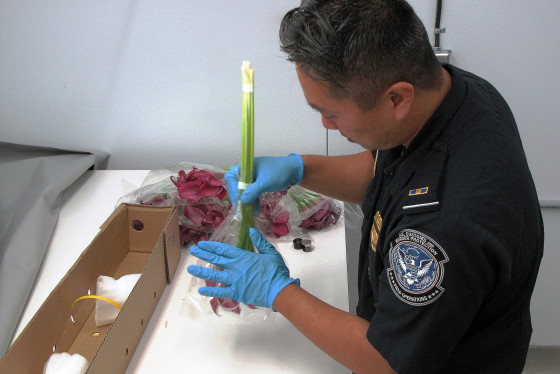
CBP’s modernized import system delivers on Valentine’s Day
Charlie Armstrong, who retired as the chief information officer of the Customs and Border Protection directorate in the Homeland Security Department on Feb. 4, said...
Companies shipping flowers from overseas to the U.S. for Valentine’s Day got some early love from the Customs and Border Protection directorate.
CBP cut the time it took to get flowers through the import process by one day thanks to the use of mobile devices and the Automated Commercial Environment (ACE) program.
“You can imagine what that does for the industry to think that your flowers are getting to market earlier and they have a day more of life in terms of how long they last,” said Charlie Armstrong, who retired as the chief information officer of the Customs and Border Protection directorate in the Homeland Security Department on Feb. 4. “We are talking about the importation of trillions of dollars of goods each year. At CBP, a very key part of our mission goal is not just to identify and stop bad things from coming in, but it’s also the issue of making sure legitimate trade gets done timely and that we keep the economy flowing, so it’s kind of this balance of things.”

Armstrong said the example of fresh cut flowers is but one of many major improvements the technology and tools under ACE is bringing to bear to save time and money for commercial shipping companies.
CBP has been working on ACE since 2001 and has spent more than $3 billion to modernize and automate border processing and enhance the security of imported goods.
The DHS inspector general reported in May 2015 that ACE is “a key technology driver of these initiatives and will be the primary means of receiving users’ standard data and other relevant documentation required for the release of imported cargo and clearance of cargo for export. Once fully implemented, ACE will become the central trade data collection system for all federal agencies, and the single point of access for this data, which includes data collection, processing, dissemination and storage.”
The IG praised CBP’s efforts for being on track to meet many of its milestones by using an agile development process.
Armstrong said CBP effort on ACE is one of his proudest achievements as a federal employee.
“This idea of a single window which really allows industry, the trading partners, customs brokers, freight forwarders, steamship lines, airlines, consolidators and everybody to file with CBP and have that data either available for other federal agencies that have a vested interest in the movement of cargo or even pass it on to them for use in their systems, and have that happen as almost a single supply chain of information instead of having to file data with FDA, USDA, CBP all separately and worry about the timing and release of things,” he said. “For the first time, we’re actually getting that process in place. The system is pretty much in place now that the transition for industry and government is happening and will happen over the next few months.”
As of early February, Armstrong said CBP was using ACE to release about 24 percent of all cargo instead of the old system. CBP increased that rate just a few weeks later to 30 percent. He said the goal is to get that up to close to 100 percent throughout the next six months.
“When I started with U.S. Customs in 1988, we were still automating paper forms, taking paper forms and making them a data stream. Now, here we are today looking at the whole process as different data streams all flowing in and all flowing to different agencies for whatever they need it for, and allowing it to happen without a bunch of separate form filings,” he said. “It’s a pretty amazing transformation.”
Beyond ACE, Armstrong said he is proud of his efforts during the (year) 2000 changeover and his efforts to build a high-quality team at CBP before he left.
Armstrong said ensuring your staff is trained and has the necessary skill-sets is one of the most important lessons he learned during his career as a CIO.
“You have to step back and look at the team you’ve got and is it the team you need for the future. Don’t be afraid to make some changes and build that team. That team should be resilient and be able to carry on without you or any other person in the construct,” he said. “I think that’s a key thing that a lot of people don’t get an opportunity to do because it takes so long to get people on board and get them through the clearance process. So make sure you have enough time and ramp room to get that done while you are going to be CIO, and really strike out on what those key positions are and get the right people in them.”
Armstrong said he plans to enjoy retirement over the next few months and visit his kids in other parts of the country. He said he will return to the working world eventually, but he doesn’t know where he will land or in what sector.
Copyright © 2025 Federal News Network. All rights reserved. This website is not intended for users located within the European Economic Area.
Jason Miller is executive editor of Federal News Network and directs news coverage on the people, policy and programs of the federal government.
Follow @jmillerWFED






